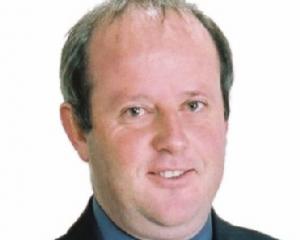The IRD used an "alert", similar to a press release, to talk about the recent Penny and Hooper case which involved two orthopaedic surgeons practising in Christchurch as sole traders - Ian Penny and Gary Hooper.
The two men restructured their businesses so they were carried on by companies in 1997 and 2000 respectively.
In both cases, as a result of salaries from their newly formed companies being lower than their previous self-employed earnings, significant tax savings were achieved.
Instead of paying the then top personal tax rate of 39%, the companies paid 33%.
Polson Higgs tax partner Michael Turner was one of those who asked the IRD for a clarifying statement on the case.
The Court of Appeal had overturned a High Court decision in favour of the IRD.
Mr Turner said the IRD deserved praise for responding to requests for clarification.
"But it tells us what we already knew. A few things help a little, but it leaves many things unanswered.
"That is the frustrating part about it."
Mr Turner was also critical of the IRD for providing only one example in the alert, that of a "successful professional taxpayer" deriving $850,000 net income from private practice.
"The example is a bit simple. It is always easy at the extremes to find examples that clearly illustrate the point.
"However, most taxpayers would not earn $850,000.
"Unfortunately, the IRD has chosen not to provide everyday examples.
"It is these situations that taxpayers and their advisers will need to grapple with and they will be far from clear cut."
As an extreme example, if the person earning $850,000 was a doctor, but the pay for the same work at Dunedin Hospital was $220,000, there would be debate around if that could be called the market salary.
Also, the average market salary for an accountant could be markedly different from the profits the same accountant could make out of his or her business, Mr Turner said.
"This will be an ongoing area of debate. The IRD has just picked a big number."
Mr Turner hoped the IRD would issue further guidelines concerning market salaries.
The IRD said in its alert that it had investigated several of the tax avoidance arrangements in recent years.
"Where we still consider . . . that the arrangement is tax avoidance, amended assessments will be issued which attribute some or all of the diverted income to the taxpayer to counteract the tax benefit resulting from the use of this arrangement."
The department would also continue to investigate similar arrangements where there were significant tax benefits.
Late payment penalties and shortfall penalties might also apply, the department said.
Mr Turner said there would be major concern about the implications of the IRD using shortfall penalties which were 100% of the tax avoided.
"As a penalty, it is massive numbers. How were taxpayers meant to know what the boundaries were 10 years ago when the High Court obviously got it wrong.
"There is the benefit of hindsight for the IRD.
"That is quite a big stick to be wielding around. It is very concerning."
The IRD alert would create uncertainty which always worked in favour of the department, he said.
People often paid more tax than they should if they were uncertain.
Suggestions in the tax community that the case would be appealed to the Supreme Court were not acknowledged by the IRD, Mr Turner said.
He was aware of moves to get the decision appealed which could give the definitive answer.


